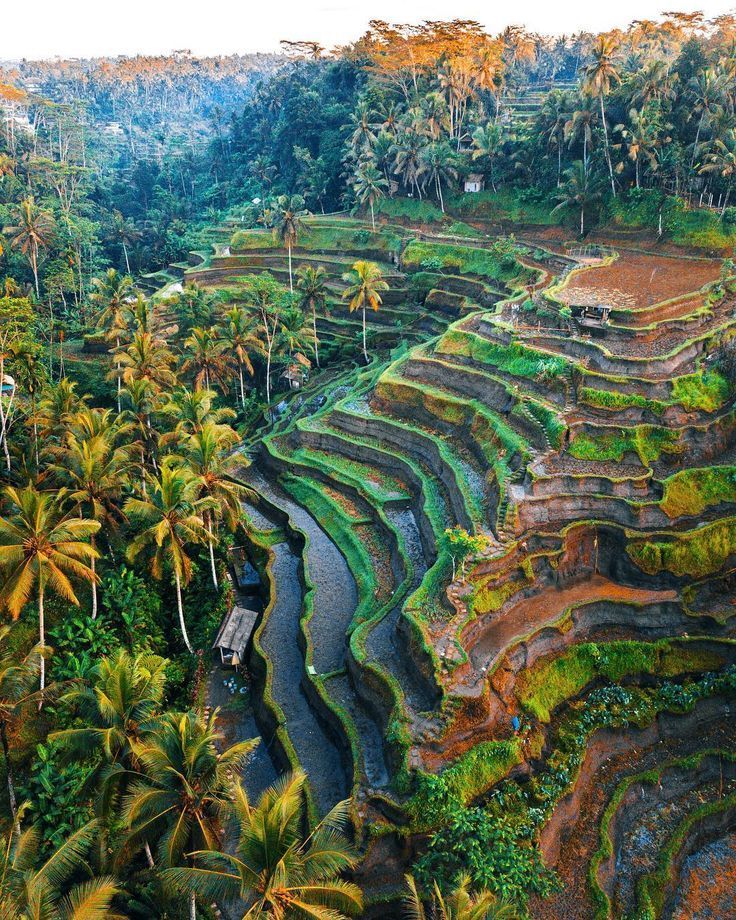Stunning Reasons Why Tegallalang Rice Terrace is a Must-See Affordable Wonder in Bali
Introduction: The Green Heart of Bali
When people imagine Bali, the first images that often come to mind are lush green rice terraces, palm trees swaying in the breeze, and endless valleys glowing under golden sunlight. One of the most iconic representations of this beauty is the Tegallalang Rice Terrace, located in Ubud.
- Introduction: The Green Heart of Bali
- History of Tegallalang Rice Terrace
- Fascinating Facts About Tegallalang Rice Terrace
- Timeline of Tegallalang Rice Terrace
- Significance of Tegallalang Rice Terrace
- Wishing and Emotional Connection
- Importance in Daily Life and Society
- FAQs About Tegallalang Rice Terrace
- Important Points for Travelers
- Conclusion: Daily Life Impact and Final Thoughts
These cascading rice fields, carved into the hillside, are more than just a scenic attraction. They represent Bali’s agricultural traditions, spiritual connection to nature, and the community spirit of the Balinese people. For travelers on a budget, Tegallalang offers one of the most cheap vacation ideas—a breathtaking natural wonder you can explore for free or at minimal cost.
Let’s dive into the history, facts, significance, FAQs, timeline, cultural observance, and the daily life impact of Tegallalang Rice Terrace, and see why it’s not just a tourist stop but a symbol of Bali’s soul.
History of Tegallalang Rice Terrace
The Tegallalang Rice Terrace traces its origins back to ancient Balinese farming traditions. The terraces are a result of the subak irrigation system, a cooperative water management method that dates to the 9th century.
The Subak System – Founded by Rsi Markandeya, a revered Balinese priest, the subak system embodies the philosophy of Tri Hita Karana (harmony between God, people, and nature).
Agricultural Heritage – Over centuries, farmers carved the steep hillsides into terraces to maximize land use and ensure equal water distribution.
Tourism Recognition – By the late 20th century, Tegallalang gained international fame as a stunning natural landmark, making it one of Ubud’s most visited attractions.
In 2012, UNESCO recognized Bali’s Cultural Landscape of Bali Province: the Subak System as a World Heritage Site—cementing Tegallalang’s role as a living cultural treasure.
Fascinating Facts About Tegallalang Rice Terrace
Ancient Origins – The terraces are over 1,000 years old, maintained by generations of Balinese farmers.
Subak Philosophy – The irrigation system reflects spirituality, democracy, and environmental harmony.
UNESCO World Heritage – Tegallalang is part of Bali’s UNESCO-recognized cultural landscapes.
Tourist Hotspot – It’s one of the most photographed sites in Bali, appearing in countless travel magazines and Instagram feeds.
Community-Based Farming – Farmers share water resources and work together, fostering unity.
Changing Seasons – The view varies throughout the year—from vibrant green fields to golden harvest landscapes.
Affordable Experience – Entry fees are low (around $2–3), making it accessible to all travelers.
Cultural Dances – Some villages nearby perform traditional dances to showcase Balinese rituals.
Bali Swings and Cafes – Surrounding areas now feature iconic swings and coffee shops overlooking the terraces.
Spiritual Connection – Many locals believe working in the terraces is an offering to the gods.
Timeline of Tegallalang Rice Terrace
9th Century – Subak system introduced by Rsi Markandeya.
12th–18th Century – Terraced farming expands across Bali.
1900s – Rice terraces become integral to Bali’s economy and culture.
1970s – International travelers start exploring Ubud and Tegallalang.
2000s – Social media makes Tegallalang a global travel sensation.
2012 – UNESCO recognition strengthens cultural heritage status.
2025 – Tegallalang remains one of Bali’s top affordable tourist experiences.
Significance of Tegallalang Rice Terrace
The terraces are not just visually appealing—they are deeply meaningful.
Agricultural Significance: The terraces feed communities and support Bali’s rice-based diet.
Spiritual Significance: Farmers see rice cultivation as sacred, tied to prayers and offerings.
Cultural Significance: The subak system promotes cooperation and fairness among villagers.
Tourism Significance: The terraces attract millions of visitors, boosting Bali’s economy.
Environmental Significance: Terracing prevents soil erosion and conserves water, making farming sustainable.
Wishing and Emotional Connection
Many visitors believe Tegallalang is a place of hope, blessings, and renewal.
Travelers often make wishes while overlooking the terraces, inspired by the harmony of nature and community.
Couples write wishes for lifelong love as they sit on Bali swings facing the fields.
Locals, while planting or harvesting rice, offer prayers and wishes to the gods for abundance and peace.
The rice terraces thus symbolize not just food but gratitude and blessings in daily life.
Importance in Daily Life and Society
Tegallalang’s impact goes beyond tourism—it’s central to Balinese life.
Food Security – The terraces produce rice, Bali’s staple food.
Community Unity – The subak irrigation system strengthens social bonds.
Cultural Identity – Rice terraces represent Bali’s unique traditions on the world stage.
Tourism Economy – Cafes, tours, and handicraft shops support local livelihoods.
Sustainability – The terraces are living proof that ancient farming methods can support modern needs.
Mental Peace – Walking through the terraces reduces stress and connects people with nature.
FAQs About Tegallalang Rice Terrace
Q1: Where is Tegallalang Rice Terrace located?
A: It’s in Ubud, central Bali, about 20 minutes north of Ubud town.
Q2: How much does it cost to visit?
A: Around $2–3 per person, making it very affordable.
Q3: What is the best time to visit?
A: Early morning for sunrise or late afternoon for golden light, with fewer crowds.
Q4: Can you walk inside the terraces?
A: Yes, visitors can walk the trails, though some areas may ask for small donations to support farmers.
Q5: Why is Tegallalang famous?
A: For its breathtaking views, cultural significance, and its role in the UNESCO-recognized subak system.
Important Points for Travelers
Wear comfortable shoes for walking through muddy paths.
Bring a hat and water, as the sun can be strong.
Support local farmers by donating or buying souvenirs.
Visit during sunrise for magical photography.
Be respectful of locals working in the fields.
Conclusion: Daily Life Impact and Final Thoughts
The Tegallalang Rice Terrace is more than a postcard view—it is a living cultural and spiritual masterpiece. For travelers, it offers one of the most affordable yet unforgettable experiences in Bali. For locals, it represents their food, faith, and unity. For the world, it stands as a symbol of how humanity and nature can thrive together.
In our busy, modern lives, Tegallalang reminds us to slow down and embrace harmony. Whether you’re making a wish at sunrise, sipping coffee overlooking the fields, or simply admiring the ancient subak system at work, you’ll realize that true beauty is found where tradition meets nature.
So next time you’re in Bali, don’t just see Tegallalang—feel it, live it, and let it inspire you.








